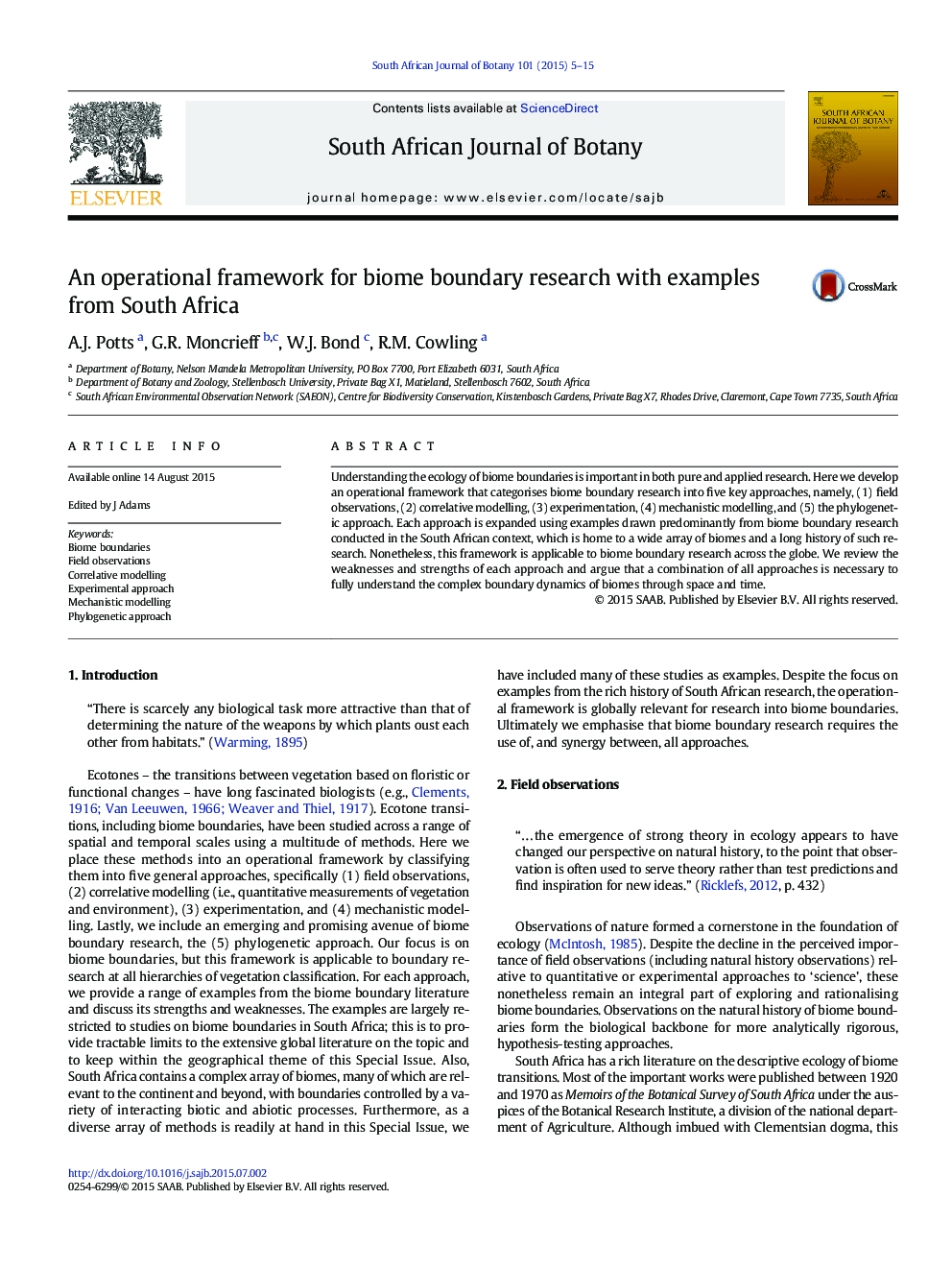| Article ID | Journal | Published Year | Pages | File Type |
|---|---|---|---|---|
| 4520402 | South African Journal of Botany | 2015 | 11 Pages |
•Biome boundary research has been undertaken using a variety of methods.•We classify these approaches into five approaches.•Field observations, correlative, experimental, mechanistic modelling, and phylogenetic.•We discuss the strengths and weaknesses of each approach.•We conclude that biome boundary research requires a multi-approach framework.
Understanding the ecology of biome boundaries is important in both pure and applied research. Here we develop an operational framework that categorises biome boundary research into five key approaches, namely, (1) field observations, (2) correlative modelling, (3) experimentation, (4) mechanistic modelling, and (5) the phylogenetic approach. Each approach is expanded using examples drawn predominantly from biome boundary research conducted in the South African context, which is home to a wide array of biomes and a long history of such research. Nonetheless, this framework is applicable to biome boundary research across the globe. We review the weaknesses and strengths of each approach and argue that a combination of all approaches is necessary to fully understand the complex boundary dynamics of biomes through space and time.
